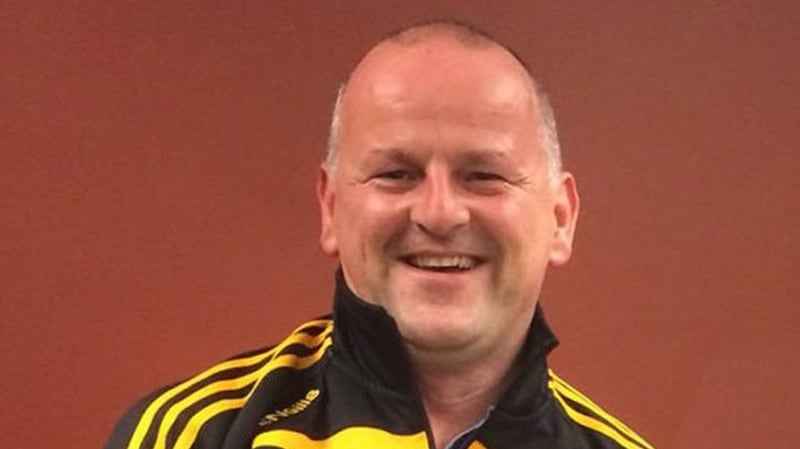We were “full-on Paki-bashing” boasted one man, recounting his weekend supporting his team away in Bradford. His mate was more concerned with showing me the scars from his fight with a policeman. I was having a chat in a pub with people who would describe themselves as football supporters but all they talked about was the feeling they get when violence breaks out. To them, it was the primary reason you’d go to a match.
They looked and dressed exactly as you would expect of football hooligans. While they spoke about how important the club they followed meant to them, they were oblivious they were in the company of several players from that team. To them, supporting Millwall was an expression of something deep and meaningful. It just didn’t extend to having any interest in what happens on the pitch.

Seán Cox, a 53-year-old father of three from Dunboyne, is in critical condition in hospital following an unprovoked attack outside Anfield last Tuesday evening. He had travelled to Liverpool's Champions League semi-final first leg tie against Roma with his brother and is in an induced coma due to bleeding on his brain. Two Roma fans in their 20s have been charged with violent disorder and causing grievous bodily harm.
Liverpool’s previous Champions League tie was also marred by trouble when Manchester City’s team bus was pelted with bottles and flares as it approached Anfield. Thankfully no injuries were sustained by any players or staff on board, but a replacement bus was required for the journey home.
Why can’t everyone just go to a game to support their team and appreciate football? How is it possible to not make it home after going to a match?
Solidarity
A GoFundMe page has been set up by supporters to help with his Seán's medical expenses. Captain Jordan Henderson released a statement saying the outcome of his treatment was the only result that now mattered to him and his team-mates. Jürgen Klopp wore a Liverbird badge in the colours of the Irish flag during his press conference yesterday in support of Seán and his family. Alex Oxlade-Chamberlain said his own disappointments at missing the World Cup through injury paled into significance to what Seán's family must be feeling. A jersey from his hometown GAA club, St Peter's in Dunboyne, will be hanging in the Anfield dressingroom this afternoon as a mark of solidarity. It will also be brought to the Stadio Olimpico for the second leg on Wednesday.
The responses have been superb to something that should never have to be dealt with in sport, but the trickier part is to ensure it won’t happen again. “I obviously don’t have the solution for it,” said Klopp yesterday, “probably no one has that”. Even more complex is trying to understand the mindset of those involved. While it’s completely at odds with how we describe the nature of fandom itself, it’s a part of the experience that draws a lot of people in. Sadly, there’s no reason to believe it’s going to go away.
The conversation I alluded to earlier wasn’t the only one I had of its kind. The behaviour the fans spoke about weren’t isolated incidents. What was alarming to me initially was how they rationalised what they were doing, seeing it as a laudable way of showing their support for their team. Like they’d been passed the torch from previous generations of the club’s more troublesome supporters, they figured the standing and reputation of the area was theirs to maintain. It was no different to what you’d usually hear when fans describe being fans, just with violence and aggression in the place of chants and songs. A ludicrous line of thinking to many but perfectly reasonable to them. They were doing their bit, as they saw it, and should be looked up to.
Pressure
According to some media reports, members of Roma’s Fedayn Ultra group are understood to be responsible for the unprovoked attacks at Anfield on Tuesday. These aren’t fans that got carried away or overdid it on drink and drugs, but ones that see violence and chaos as acceptable means of support. They’re not fans that overreact to things going poorly on the pitch for their team, they’re fans that travel to games with the intent to cause injury and harm. Pressure from decent fans or threats of expulsion from the club themselves won’t do anything to bring about change in how they behave. They won’t see Seán Cox’s injuries as a reason to desist from more trouble, as those injuries are the inevitable consequences of what they set out to do.
Liverpool took the unprecedented step of requesting a meeting yesterday, asking Uefa, Roma officials and the relevant police authorities to attend. Tensions around the game have been heightened given the attacks by the Fedayn Ultras, but the safety of their 5,000 travelling fans is the club's concern now.
As sickening as it is to get inside the head of those involved, attempting to understand their world is a good place to start. The thuggery affords them a status among their peers. Senior figures who’ve been behaving like this for decades are revered in their group and they see violence as an expression of the strength of their feeling for their club. They’re not influenced by Uefa campaigns promoting respect or good behaviour, and they won’t be swayed by editorials or moral outrage. And media coverage is a badge of honour, all the better if it’s international.
The lines are often hard to draw between acceptable displays of passion and the kinds of things that should get you ejected from the ground. Most people know that singing songs is more supportive than causing trouble but in the minds of those that do so, there’s no distinction. They consider themselves to be the real fans and they’re not going to change.










